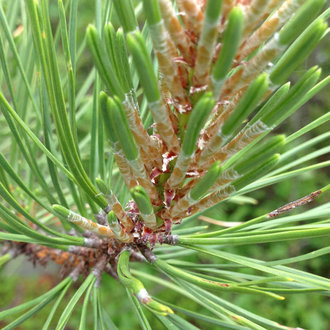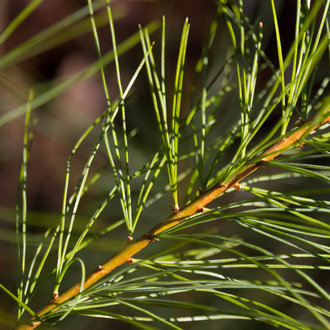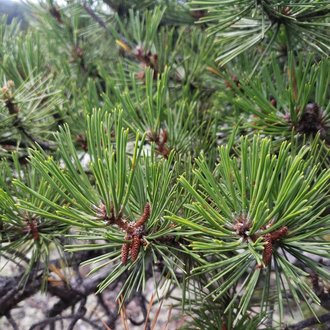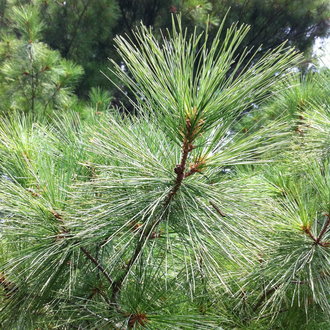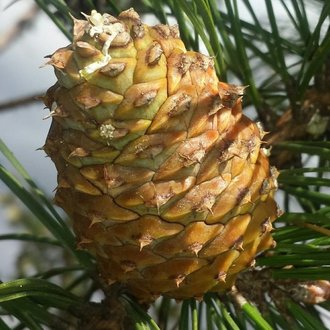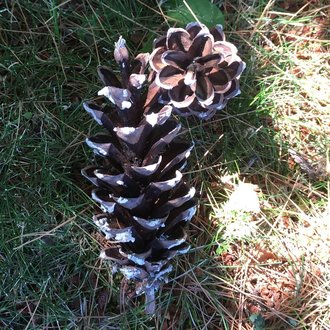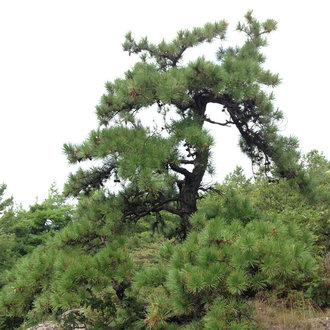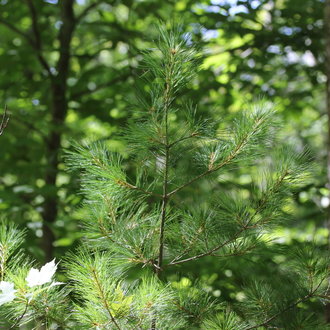Pitch Pine vs Eastern White Pine
These pines are sometimes confused because their ranges overlap and their needles are similar in length. They are easily distinguished by cones, needle color, and habitat.
Pitch Pine (Pinus rigida) | Eastern White Pine (Pinus strobus) |
A scrubby, fire-adapted pine that often grows in harsh conditions, such as dry, acidic, sandy or rocky soil. | A common native pine of the northeast, Eastern White Pine is the tallest tree in the east, and more shade-tolerant than most pines. |
Three needles per cluster. Photo © charlie, CC BY 4.0. | Five needles per cluster. Photo © pleary, CC BY 4.0. |
Needles green to yellowish green, never bluish. Photo © Kevin Keegan, Public Domain. | Needles bluish green. Photo © Charlie Inyo, CC BY 4.0. |
Cones stout, oval-shaped. Some cones may remain on the tree and not open until a fire. Photo © Laura Gaudette, CC BY 4.0. | Cones much longer and narrower relative to their width. All cones open when ripe. Photo © Helen Linda, CC BY 4.0. |
Grows in harsh, exposed conditions where white pine (and most other trees) could not survive. Photo © Charlie Hohn, CC BY 4.0. | Found on richer sites. Young trees often found in forested setting where pitch pine would not have enough light to survive. Photo © Even Dankowicz, CC BY 4.0. |
References & External Resources
These short lists show only links helpful for ID. For a complete list of references and resources also covering other aspects of ecology, visit the links section of the full article on each plant, which is the first entry here.



